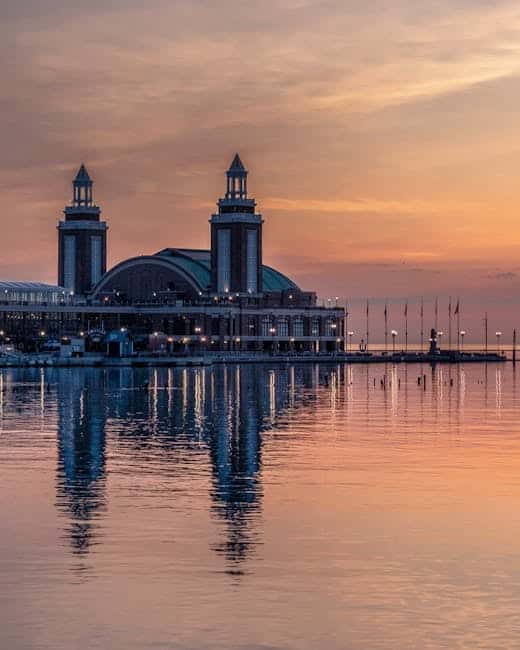The Cultural Significance of Chicago’s Lakefront Parks
Chicago, famously known as the “Windy City,” is a metropolis rich in culture, architecture, and history. Among its many treasures, the lakefront parks stand out as vibrant cultural hubs. These parks, stretching along the picturesque shores of Lake Michigan, are more than just green spaces. They are a testament to the city’s commitment to preserving nature while celebrating its diverse heritage. In this blog post, we’ll explore the cultural significance of Chicago’s lakefront parks and why they continue to be beloved by residents and visitors alike.
Table of Contents
1. Historical Background of Chicago’s Lakefront Parks
2. Art and Architecture Along the Lakefront
3. Recreational Activities and Community Engagement
4. Ecological Significance and Environmental Stewardship
5. Conclusion
6. FAQs
Historical Background of Chicago’s Lakefront Parks
The development of Chicago’s lakefront parks dates back to the mid-19th century. As the city expanded, it became clear that urban green spaces were essential for public health and happiness. Visionaries like Daniel Burnham played a crucial role in the planning and execution of these parks, integrating them into the city’s urban landscape. Burnham’s 1909 Plan of Chicago emphasized the importance of a continuous park system along the lakefront, designed to provide respite from the bustling city life.
Over the decades, the parks evolved, incorporating elements that reflect Chicago’s cultural mosaic. The parks have hosted numerous historical events, from the 1893 World’s Columbian Exposition to various political rallies, each contributing to the rich tapestry of Chicago’s history.
Art and Architecture Along the Lakefront
Chicago’s lakefront parks are a testament to the city’s artistic and architectural prowess. Millennium Park, one of the most iconic lakefront parks, is home to the famous Cloud Gate sculpture, affectionately known as “The Bean.” This reflective sculpture by Anish Kapoor has become a symbol of the city, drawing millions of visitors annually.
Furthermore, the parks feature architectural marvels such as the Jay Pritzker Pavilion, designed by Frank Gehry. This open-air concert venue hosts numerous cultural events, including the Grant Park Music Festival, showcasing the city’s vibrant music scene. The blend of art and architecture along the lakefront not only beautifies the city but also reinforces Chicago’s status as a cultural powerhouse.
Recreational Activities and Community Engagement
Chicago’s lakefront parks offer an array of recreational activities that encourage community engagement and promote a healthy lifestyle. From biking and jogging along the Lakefront Trail to beach volleyball and sailing on Lake Michigan, there’s something for everyone.
The parks also serve as venues for numerous cultural festivals and events, such as the Chicago Air and Water Show and the Taste of Chicago. These events celebrate the city’s diverse communities, fostering a sense of unity and belonging among residents. The parks’ role in promoting inclusivity and cultural exchange cannot be understated, as they provide a platform for people from all walks of life to come together and celebrate their shared humanity. 🌍
Ecological Significance and Environmental Stewardship
Beyond their cultural and recreational importance, Chicago’s lakefront parks play a vital role in environmental conservation. The city has made significant efforts to restore natural habitats along the lakefront, ensuring the protection of local flora and fauna. Initiatives such as the restoration of native plant species and the creation of bird sanctuaries highlight Chicago’s commitment to environmental stewardship.
These green spaces also contribute to the city’s sustainability by improving air quality, reducing urban heat, and providing stormwater management. The parks serve as a reminder of the delicate balance between urban development and nature, urging us to preserve these precious resources for future generations.
Conclusion
Chicago’s lakefront parks are more than just scenic retreats; they are cultural landmarks that embody the city’s spirit and diversity. From their historical roots to their modern-day significance, these parks continue to enrich the lives of those who visit them. Whether you’re an art enthusiast, a nature lover, or simply seeking a place to unwind, Chicago’s lakefront parks offer something for everyone. As we enjoy these spaces, let us remember the importance of preserving them for future generations, ensuring they remain vital cultural and ecological assets for years to come. 🌿
FAQs
Q: What are some popular events held at Chicago’s lakefront parks?
A: Popular events include the Chicago Air and Water Show, the Taste of Chicago, and the Grant Park Music Festival.
Q: Are there any famous sculptures or architectural structures in the parks?
A: Yes, notable structures include the Cloud Gate sculpture and the Jay Pritzker Pavilion.
Q: Can you participate in water sports at the lakefront parks?
A: Absolutely! Activities like sailing and beach volleyball are popular along the lakefront.
Q: How do the parks contribute to environmental conservation?
A: The parks aid in habitat restoration, protect native species, and improve urban air quality.
Q: Are Chicago’s lakefront parks accessible year-round?
A: Yes, the parks are open year-round, offering seasonal activities for visitors to enjoy.


